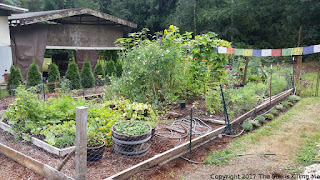Well, it's been a very, very, very wet winter and spring this year. My garden is at least a month behind. The flowers have finally begun to bloom, though! Here's what I have going in my garden right now:
Narcissus:
Blue hyacinth and pieris. Both smell delicious!:
Pulmonaria. I rescued these from a brush pile in the woods when we first moved in. They are starting to spread and look fab now that a few years have passed:
Some sort of purple rhododendron:
Narcissus Thalia after a rain shower:
Fancy blue giant hyacinth that smell amazeballs. These drench the whole backyard with a fab scent:
Fritillaria meleagris. I really like these a bunch and they have done very well in my garden the last 2 years. I'm thinking about adding more:
Closer shot. Notice the white one in the bunch:
Trilliums! Oh, How I adore you. This is our native trillium ovatum in a sea of native dicentra formosa:
Vanilla leaf! I'm so excited! I added these last year and was hoping they would take and they did! I'm working on creating a large swath of these in the woodland garden.
Redwood sorrel, the workhorse of the dry, deep shade garden. I planted these in the western red cedar grove. I have few options here and these fit the bill with shining green colors. I hope to have carpets of it blanketing the grove:
Native wild cherry tree in bloom. So pretty, but so fleeting:
The salmon berries have been blooming for several weeks now. They hearken the return of the Rufous hummingbirds each year:
Trillium luteum. I planted these a few years ago and it looks like they may finally bloom this year. Fingers crossed!:
Bergenia. Evergreen, takes shade, sun, or poor soil. It can be split a gagillion times to make more. How can you go wrong? This is one tough customer and these live in a very shady part of the garden. I do have some others in complete opposite conditions on the sunny slope and they do just as well:
Yellow stream violets. I finally have a good little grove of these going. Diminutive little things, but I love them. They seem to thrive when planted along with mosses in an open, but shady area. They like to pop up along the woodland trail here and there (and, yeah, that's hail on the ground, it's been a bit stormy lately):
Erythronium. I don't remember which variety this one is specifically. I've planted various ones and they seem to take a few years to get going. This is the first group really doing well for me. I plant them, they seem to disappear for a year, then come back with leaves, and the next year begin to flower. I guess they just need a few years to settle in:
Bleeding heart Gold Heart. I have this planted along with trillium luteum and if I can get the trillium to finally bloom, they should look spectacular together:
More Narcissus Thalia. I like this one because it's tough and takes a beating:
Pasqueflower. I've moved this a few times due to rabbits wanting to make lunch out of it. I finally moved it to this rocky slope and the rabbits seem to leave it alone here. Too much trouble to get to, I guess:
Another trillium. They pop up all over the place in my woodland garden:
This clump of trillium is really spreading. I've already split it once and this year there are even more in the clump! This one grows in the stumpery of old cedar stumps:
Some fun daffodils next to the new gold leafed spirea Gold Flame:
Tulip Clusiana. These just keep coming back for me year after year. The rabbits don't seem to bother these species tulips, either. I haven't had as much success with the yellow species tulipa sylvestris as the rabbits like to mow those to the ground for some reason. So, I'll stick to survival of the fittest and add many more of these guys to my garden:
Multiple clumps of Tulip Clusiana. These are growing along the sunny, dry slope below the sport court in my garden:
And that's what's blooming for now. My garden is still pretty new and is still in a major building phase, but I'm starting to really be able to add some fun things in now. It's been a lot of work, but I'm looking forward to continuing the garden build this year.












